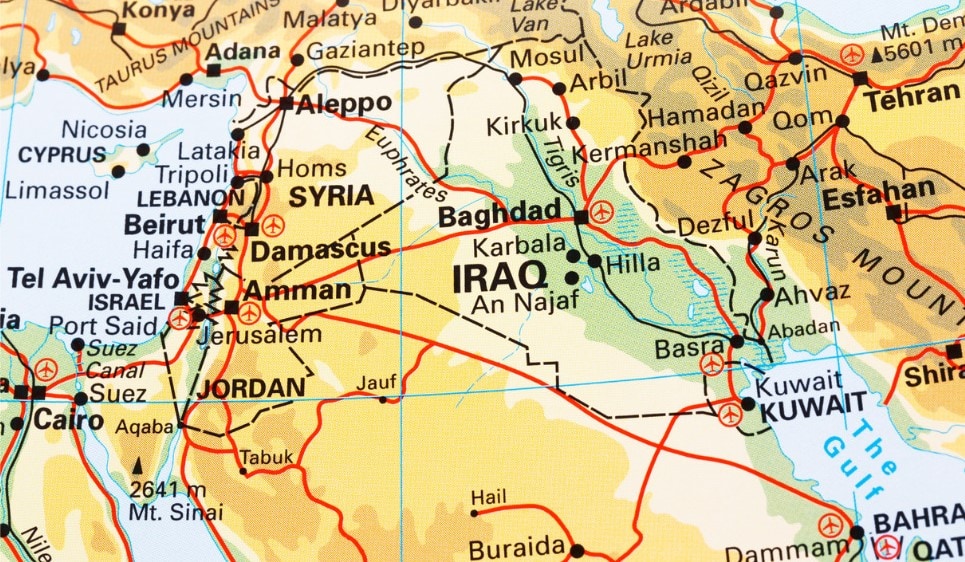IDF set to intensify military operations on distant Syria-Iraq border as Iran amasses weapons for next war with Israel.

Iran is setting up a huge base of operations in eastern Syria for a future war with Israel. The IDF’s extensive strike in the area late Monday marked the opening shot of an aggressive campaign to neutralize this threat.
Tehran shifted the focus of its military buildup closer to the Syria-Iraq border after the IDF systematically reduced its assets near Damascus, closer to Israel. The Iranians hoped that moving deep into Syrian territory will shield them from intensive IDF bombings.
Moreover, pro-Iran militias set up shop in residential areas for further protection against Israeli strikes. The militiamen took over civilian homes and turned them into military bases, Iran expert Dr. Raz Zimmt noted in a report for the Meir Amit Intelligence and Terrorism Information Center.
Missiles and drones
As part of the new strategy, Tehran is establishing a massive military presence in areas under full Iranian control near the Iraqi border. This war machine consists of advanced missiles, attack drones and weapons industries, an Israeli intelligence source told Haaretz daily.
The missiles transferred to eastern Syria can hit any point in Israel, the official said. Iran set up smuggling routes to position them even closer to the Israeli border and to transfer weapons and fighters into Lebanon as well, he warned.
Iran also relocated large contingents of foreign militia fighters to more remote locations. The Deir Ezzor governorate and Al Bukamal on the Iraqi border are now key strongholds and the logistical base for Iran’s military operations in Syria, defense analyst Ron Ben-Yishai says.
To complicate matters for Israel, this distant region is steeped with Syrian air defenses. The Iranians calculated that this will prevent or limit the repeated IDF assaults. However, Israel had other plans.
F-35s and precision bombs
The IDF attacked in eastern Syria before, but the latest strikes were on a different scale. The Air Force hit numerous targets, including command and logistic centers, Haaretz reported. Syrian sources said that warehouses of missiles and other arms for shipment to other fronts in case of war were also destroyed.
The IDF did not shy away from targeting residential areas, using precise munitions to limit collateral damage, Ben-Yishai wrote. Israeli observers estimated that an unusually large number of aircraft took part in the strike, including F-35 fighter jets.
Notably, the Air Force has been training intensively for long-range missions in recent months. Some drills focused on hitting arms convoys and rescuing downed pilots, in preparation for action deep in enemy territory.
Monday’s strike sent a message to Iran that Israel will continue to take strong action against it. However, Tehran remains committed to its strategy and has no intention to stop. This promises growing friction in eastern Syria as the IDF is set to intensify its operations if necessary, also raising the risk of an Iranian response and a broader military clash.


